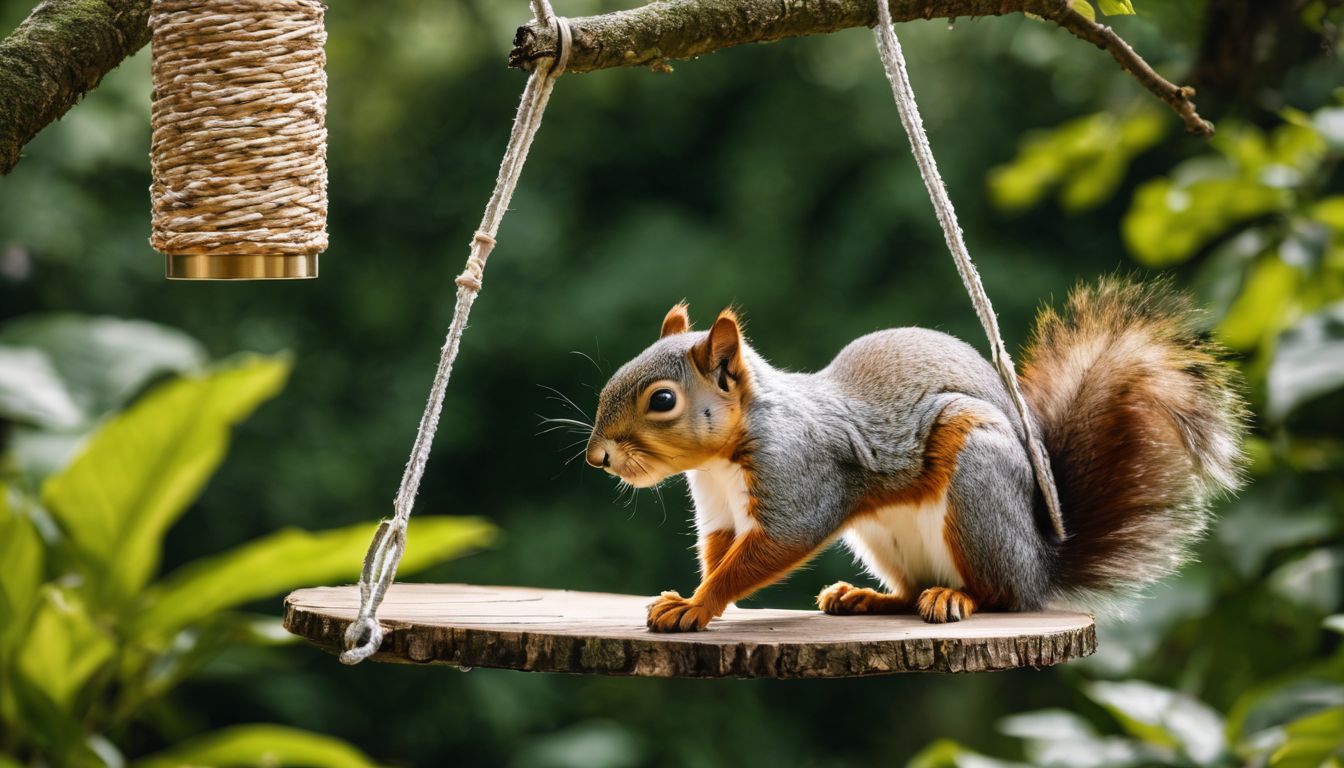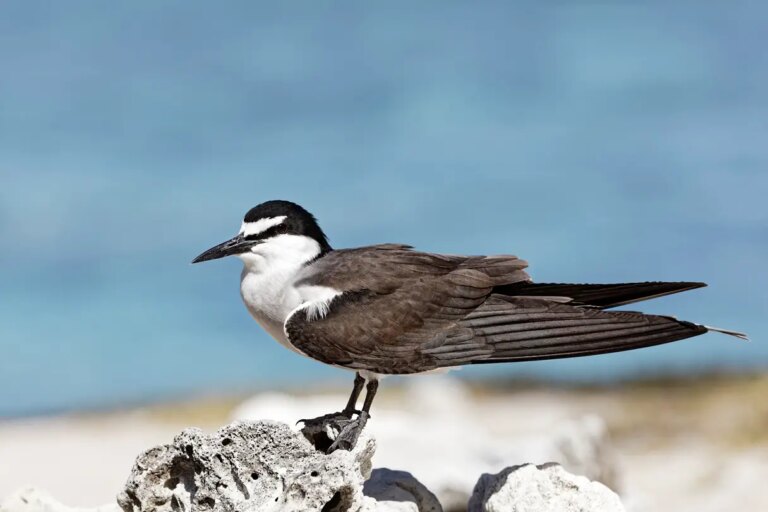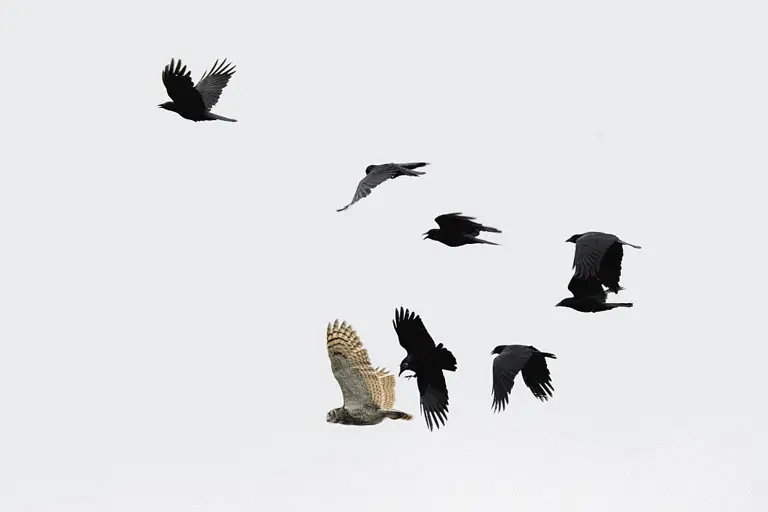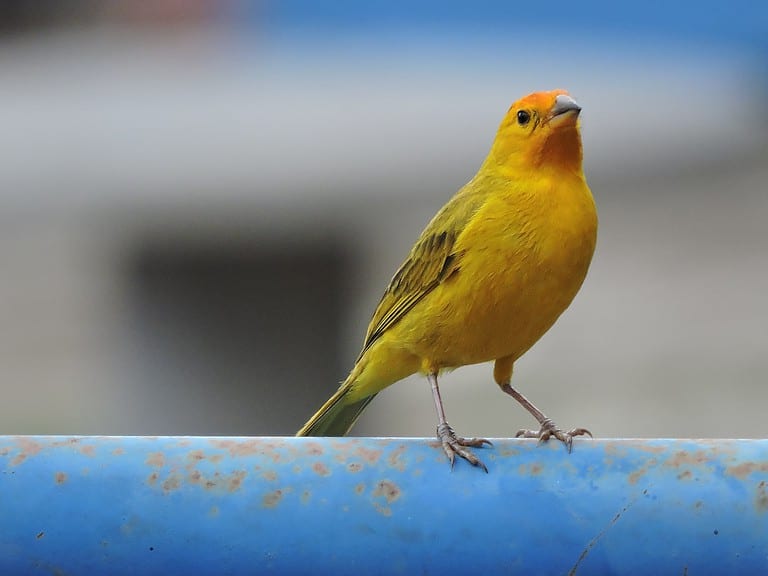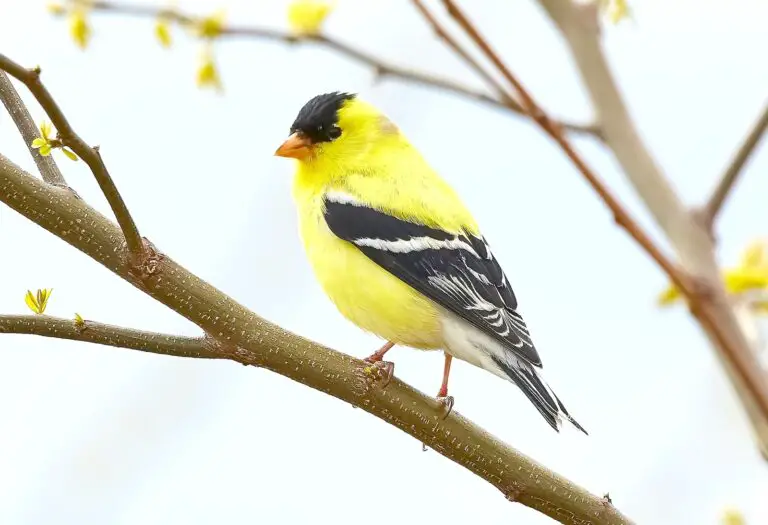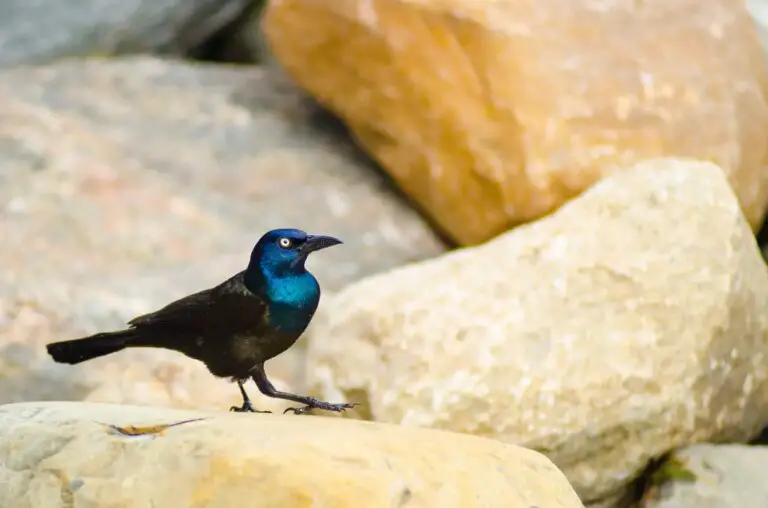DIY Squirrel Baffle Projects
A squirrel baffle is a device used to protect bird feeders and bird houses from pesky squirrels and other wildlife. It helps save money on bird seed and deters animals from accessing the feeder.
Protects bird feeders and bird houses

Squirrels are clever critters, but a well-made squirrel baffle keeps them away from the bird feeders and houses. It’s a shield that stops these little bandits from stealing the food meant for our feathered friends.
Birds can eat in peace without furry thieves climbing down or jumping across to their snacks.
Making my own baffle also means I’m keeping raccoons and chipmunks out too. These hungry visitors won’t tip over or pull apart what I’ve set up for local birds. My homemade barriers work like magic against those sneaky animals, ensuring only birds enjoy the feast I put out for them every day.
Saves money on bird seed
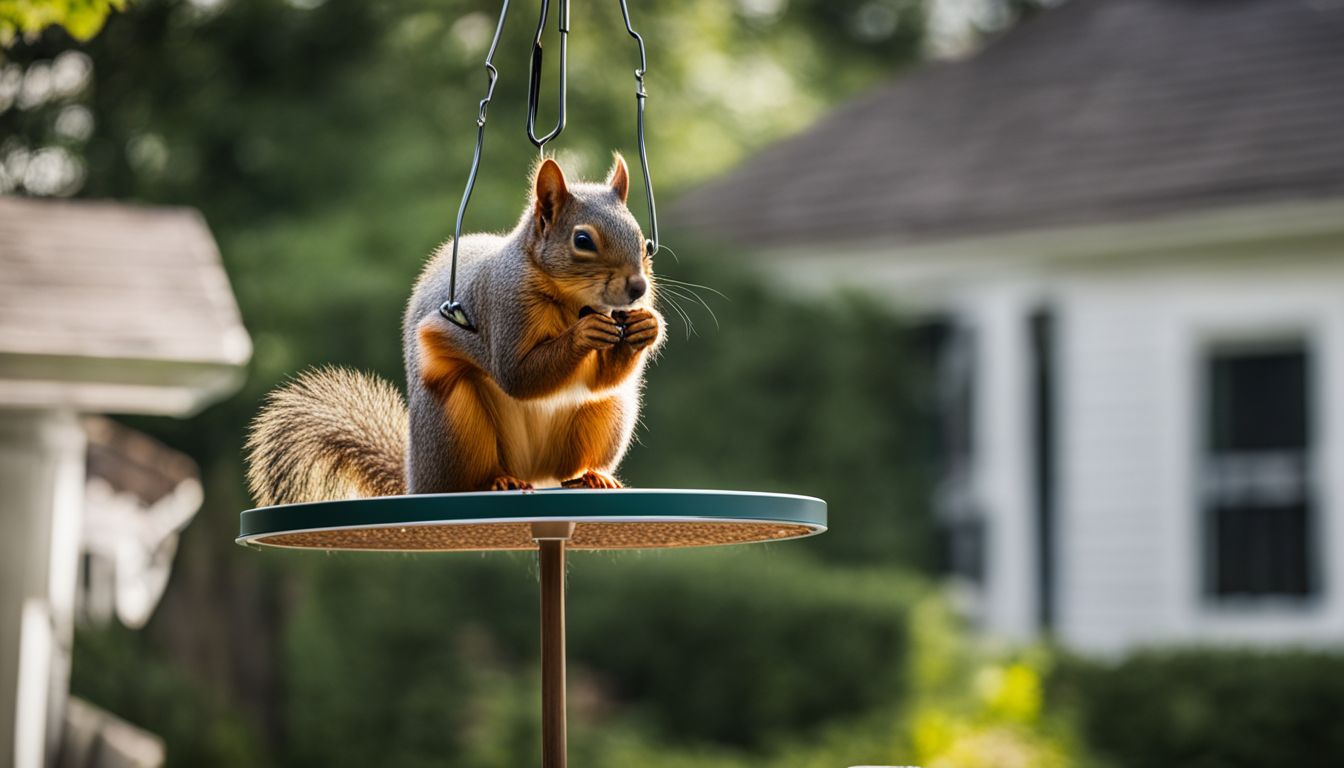
Creating a DIY squirrel baffle can help save money on bird seed by keeping pesky squirrels away from your bird feeders. By preventing these critters from accessing the feed, you’ll reduce waste and ensure that more of the seed goes to your feathered friends.
This practical solution not only protects your investment in bird seed but also ensures that you get to enjoy watching birds without constantly refilling the feeder. Plus, with homemade squirrel baffles, you won’t have to worry about constantly replenishing the supply due to squirrels pilfering the food.
Now, let’s dive into the materials needed for making a DIY squirrel baffle and walk through each step of creating this valuable addition to protect your bird feeders.
Deters pesky squirrels and other wildlife

Squirrel baffles are effective in keeping pesky squirrels and other wildlife away from bird feeders and bird houses. They serve as a barrier that prevents these animals from accessing the food, saving money on bird seed and protecting the birds.
A homemade squirrel baffle is an affordable solution for deterring squirrels and raccoons from interfering with the bird feeder. With various DIY squirrel baffle projects available, you can easily find a practical and cost-effective way to protect your garden and prevent unwanted guests from getting to your bird feeder or house.
Materials Needed for DIY Squirrel Baffle

To create your own DIY squirrel baffle, you will need a 6″ diameter stove pipe cap, a 6″ diameter, 2-foot long stove pipe, and some 2×4 pieces of wood. These materials will help you create a simple yet effective squirrel deterrent for your bird feeders or bird houses.
6\” diameter stove pipe cap
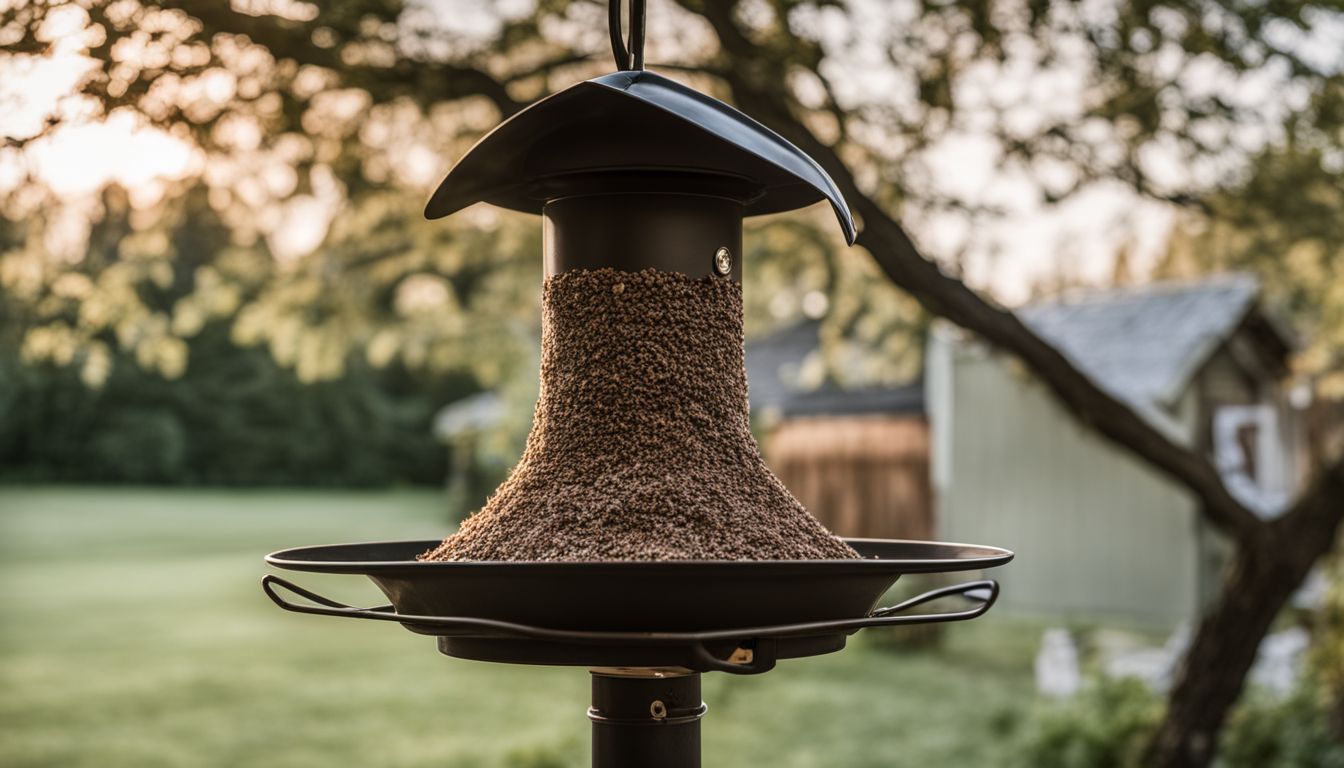
I found that the 6-inch diameter stove pipe cap works great as a DIY squirrel baffle. It helps to keep squirrels away from bird feeders, preventing them from accessing the food and protecting it for the birds.
By using this simple but effective material, you can easily create a barrier that keeps pesky wildlife at bay while saving money on bird seed.
The 6\\\” diameter stove pipe cap is an affordable option and easy to install on your bird feeder or feeding station. With this solution, you can enjoy watching the birds without worrying about interference from squirrels or other critters.
6\” diameter, 2-foot long stove pipe
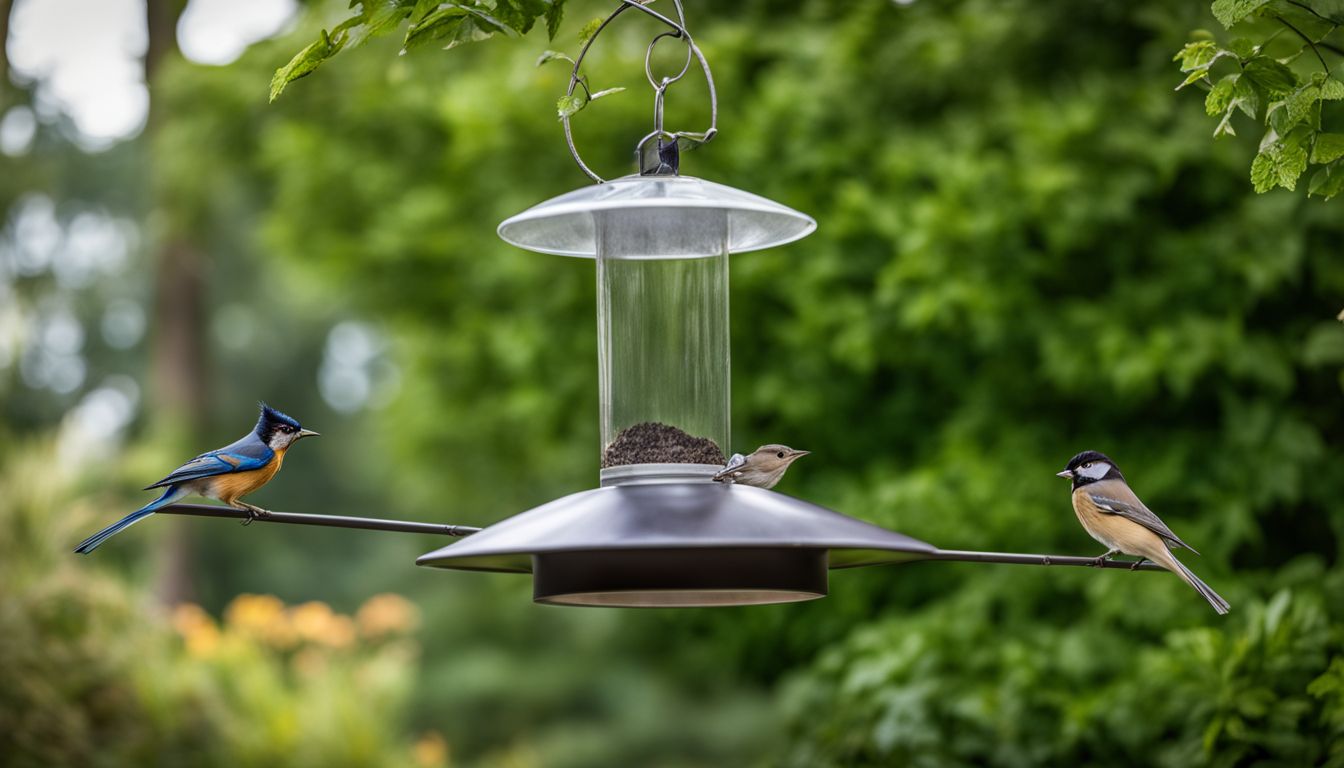
I used a 6\\\” diameter, 2-foot long stove pipe which is easy to find at hardware stores. Using this, I cut the length needed for my project with simple tools like a hacksaw or tin snips.
This stove pipe makes an effective squirrel baffle for bird feeders and houses as it’s sturdy and durable, keeping pesky critters away from the food source.
2×4 pieces of wood

Now, let’s get to the woodworking part. To make a DIY squirrel baffle, you’ll need 2×4 pieces of wood. These are easily available at any hardware store and are perfect for creating a sturdy base to support your squirrel baffle.
You can cut the wood into appropriate lengths and attach them securely to your bird feeder or bird house as a mounting structure for the baffle.
Using 2×4 pieces of wood provides stability and durability, ensuring that your DIY squirrel baffle will effectively protect your bird feeders from pesky squirrels. Additionally, you can customize the size and design of the wooden base according to your specific requirements and preferences, making it an ideal material for this project.
Step-by-Step Guide for Making a DIY Squirrel Baffle

First, analyze the situation and determine where to place the baffle. Then, cut the stove pipe and wood pieces according to your measurements, attach the baffle to your bird feeder or house, and make any necessary final adjustments.
Read on to learn more about protecting your bird feeders with DIY squirrel baffles!
Analyze the situation

To start, I checked the bird feeder’s location to see where squirrels could climb or jump onto. Then, I chose a suitable baffle design based on the feeder type and pole size. After that, I made sure to gather all the necessary materials for the project – including a 6″ diameter stove pipe cap and a 2-foot long stove pipe.
Once everything was ready, I followed the step-by-step guide to construct my DIY squirrel baffle. Finally, after attaching it securely to the bird feeder or house, I observed any adjustments needed before considering the task complete.
I assessed where squirrels could potentially reach the bird feeders by climbing or jumping nearby. Using this information helped me select an appropriate baffle design and gather all of my required materials for this DIY project.
Cut the stove pipe and wood pieces

Before cutting the stove pipe and wood pieces, it’s important to measure and mark where to make the cuts. Make sure to wear safety goggles and work gloves during this process.
- Measure the length needed for the stove pipe, ensuring it is long enough to cover the pole supporting your bird feeder or bird house.
- Use a marker or chalk to outline where you will cut the stove pipe according to your measurements.
- Carefully cut along the marked line using a reciprocating saw or metal snips, making sure to follow the line accurately.
- Next, measure and cut two pieces of 2×4 wood to create a sturdy mount for the baffle.
- Use a saw to make precise cuts on the wood according to your measurements, ensuring they fit securely around the pole or support structure.
- Sand down any rough edges on both the stove pipe and wood pieces for a smooth finish that’s safe for wildlife and easy to handle.
Attach baffle to bird feeder or bird house

To attach a squirrel baffle to your bird feeder or bird house, follow these steps:
- Prepare the bird feeder or bird house by clearing any debris or obstructions from around the area.
- Position the squirrel baffle so that it is a few feet above the ground and just below the bottom of the feeder or house.
- Securely fasten the baffle to the pole or post using screws or clamps, ensuring it is stable and cannot be easily moved by wildlife.
- Test the baffle by gently pushing and pulling on it to check for stability and ensure it can effectively deter squirrels and other animals when they attempt to climb up.
- Regularly inspect and maintain the squirrel baffle to ensure it remains securely attached and continues to provide protection for your bird feeders or bird houses.
Final touches and adjustments
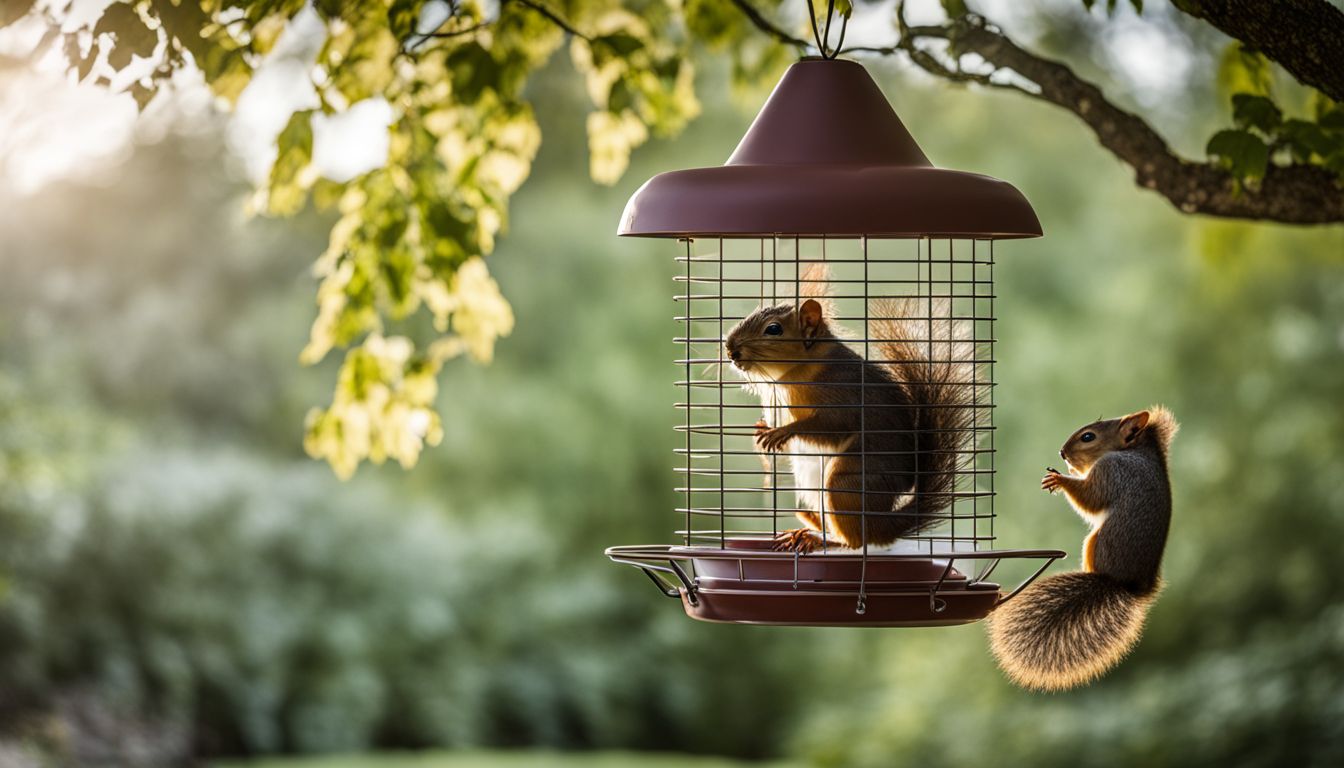
After securing the squirrel baffle to my bird feeder, it’s essential to make final adjustments for maximum effectiveness. Here are some important final touches and adjustments:
- Ensure the baffle is positioned at least 4 – 5 feet from the ground to prevent squirrels from jumping over it.
- Check that the baffle is securely fastened to the pole or feeder so it cannot be easily dislodged.
- Make sure there are no nearby objects or trees that squirrels could use to leap onto the feeder from above.
- Periodically inspect and adjust the baffle if any signs of interference or tampering by squirrels are observed.
- Consider applying a slippery substance such as petroleum jelly to the pole beneath the baffle for extra deterrence.
Other DIY Squirrel Baffle Ideas
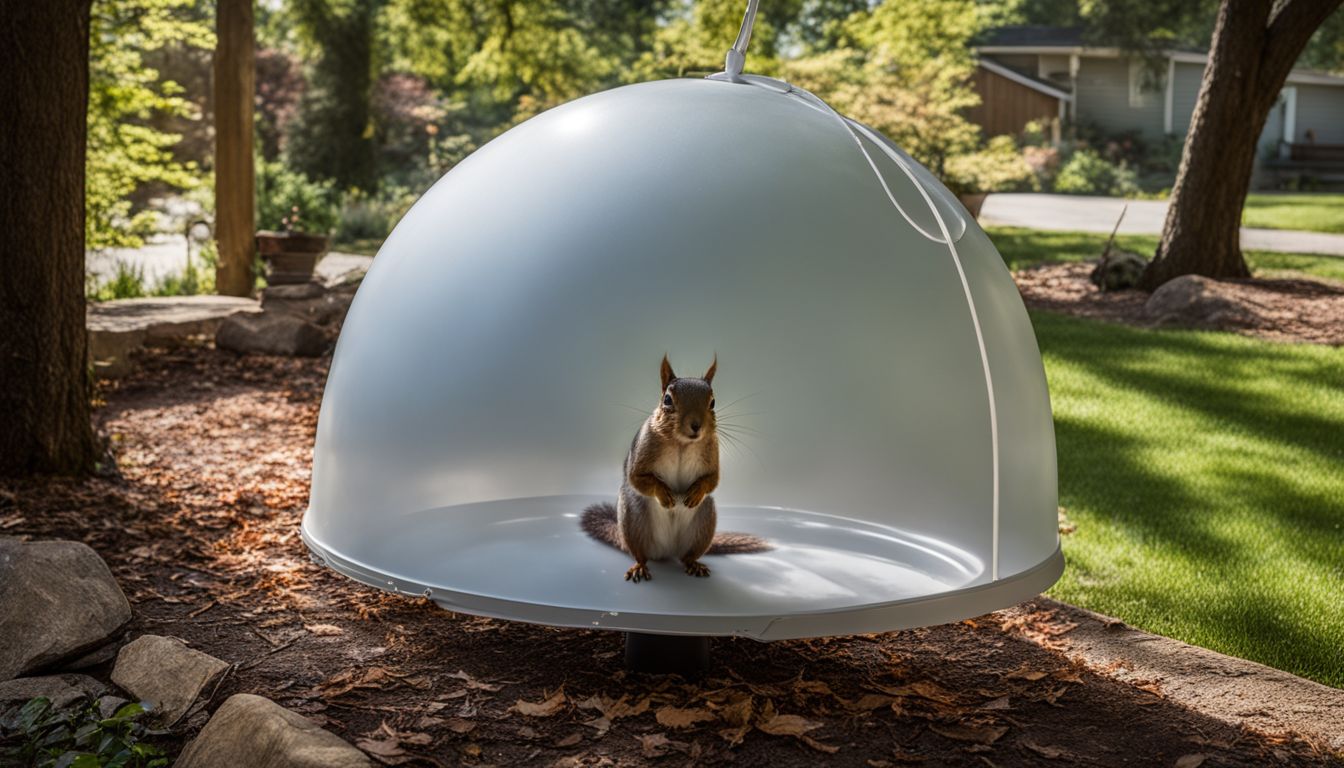
Get creative with your DIY squirrel baffles by using a plastic dome or cone, repurposing household items, or adding a spinning component for extra effectiveness. There are plenty of ways to protect your bird feeders and get rid of pesky squirrels in your backyard.
Using a plastic dome or cone
A plastic dome or cone can be an effective DIY squirrel baffle. It can be placed above the bird feeder to prevent squirrels from reaching the seeds. This method is simple and affordable, making it a practical solution for protecting bird feeders from pesky squirrels.
By using a plastic dome or cone as a squirrel baffle, you can ensure that your bird feeders remain accessible to birds while keeping unwanted critters at bay.
Using a plastic dome or cone helps in deterring squirrels from accessing the bird feeder and saves money on bird seed. It’s also an easy way to create a wildlife barrier without spending too much.
Repurposing household items
Repurposing household items for DIY squirrel baffles is a creative and practical idea. You can use old plastic containers, metal bowls, or PVC pipes to make effective squirrel deterrents.
It’s an eco-friendly way to repurpose materials that would otherwise go to waste and also serves the purpose of protecting your bird feeders from pesky squirrels. The versatility of household items allows you to customize the baffle based on the size and type of bird feeder, providing a cost-effective solution while reducing waste in a sustainable manner.
Next up, let’s explore some innovative ideas for adding a spinning component to your DIY squirrel baffle projects.
Adding a spinning component
I discovered that adding a spinning component to my DIY squirrel baffle really made a difference. Squirrels found it challenging to hold on and climb up, preventing them from reaching my bird feeder.
This simple addition effectively deterred the pesky critters without causing harm.
By incorporating a spinning element into my homemade wildlife deterrent, I created an effective barrier without spending much money or effort. This method proved to be an efficient way to protect my bird feeders while allowing birds easy access.
Conclusion: Protect Your Bird Feeders and Get Creative with DIY Squirrel Baffles
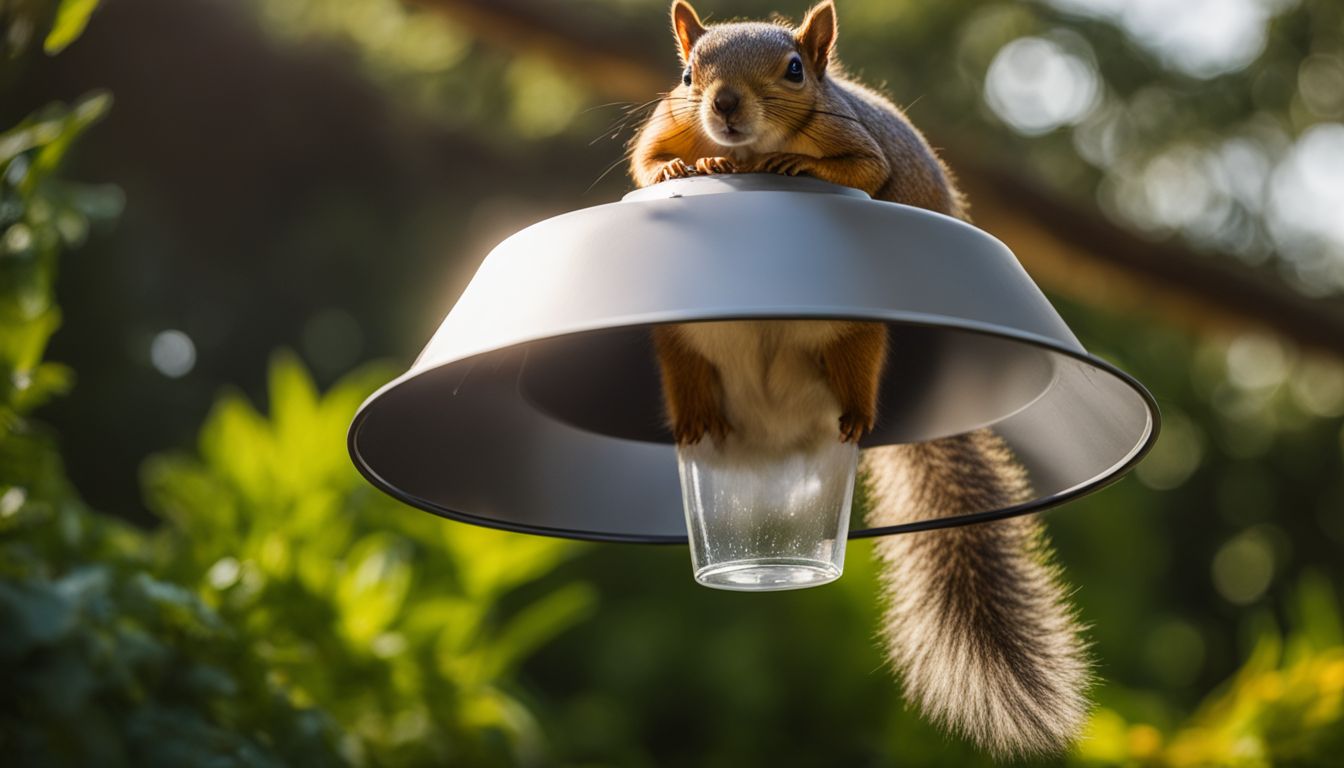
In conclusion, DIY squirrel baffles are a great way to protect your bird feeders from pesky squirrels and other animals. They can be made using simple materials and are easy to install.
By getting creative with DIY squirrel baffles, you can ensure that your bird feeders remain safe and undisturbed. So go ahead, try out these projects and keep enjoying the beautiful sight of birds in your yard without any interference.
FAQs
1. What is a DIY squirrel baffle?
A DIY squirrel baffle is something you make at home to keep squirrels away from your bird feeder or plum tree.
2. How do I make my own PVC baffle?
You can create your own PVC baffle by cutting a piece of PVC pipe and attaching it around the pole of your hanging feeder to block squirrels.
3. Can a homemade wildlife barrier work as bird feeder protection?
Yes, making a homemade wildlife barrier like a cone or tube can stop animals like squirrels from reaching the bird food.
4. Are there simple pest prevention methods for my backyard feeders?
Yes, you can build things like rodent exclusion shields or apply DIY wildlife repellent techniques to protect your feeders from pests.
5. Will any DIY projects harm the animals in my garden?
Mostly, no! Homemade critter deterrents and shields are meant to safely keep animals away without hurting them.

